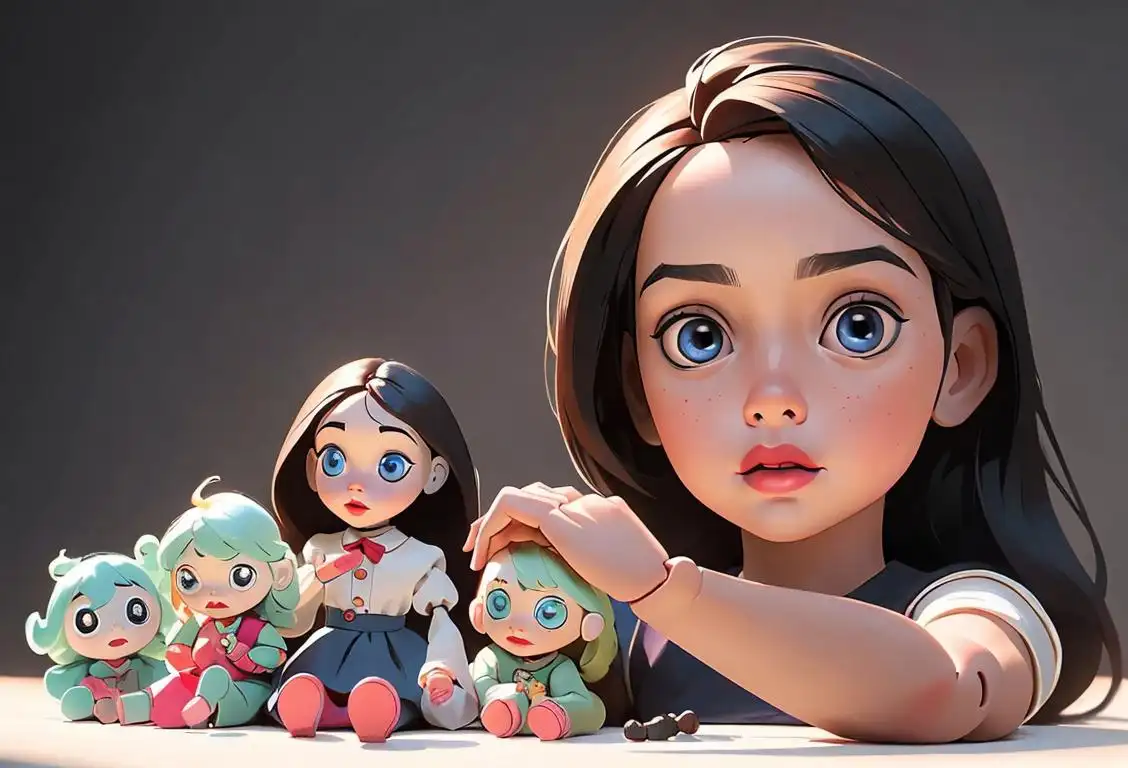National Doll Day

Welcome to National Doll Day, where we celebrate those delightful little creatures that bring joy and endless hours of play into our lives. So, grab your favorite doll, whether it's a vintage porcelain beauty or a modern fashionista, and let's dive into the fascinating world of dolls!
When is Doll Day?
It's national doll day on the 2nd August.
The Origins of National Doll Day
Every year on August 2nd, doll enthusiasts and collectors come together to celebrate National Doll Day. But how did this special day come to be? Well, let me take you on a journey through the history of dolls and the internet's obsession with them.
Since ancient times, dolls have captured the imaginations of children and adults alike. These tiny companions have been crafted from a variety of materials, including wood, clay, and even cloth. Dolls have served many purposes throughout history, from playthings for children to religious artifacts and even symbols of fertility.
Fast-forward to the age of the internet, and dolls found themselves in the spotlight once again. Online communities dedicated to doll collecting emerged, with passionate enthusiasts sharing photos, stories, and trading tips. Social media platforms became playgrounds for doll enthusiasts to connect, and hashtags like #dollstagram started trending. Doll lovers now had a place to share their unique collections and find like-minded individuals who understood the excitement of finding that perfect vintage doll at a flea market.
How to Celebrate National Doll Day
Now that you know a bit about the history of dolls, it's time to embrace National Doll Day and have some fun! Here are a few ideas to make this day truly memorable:
- Host a doll tea party: Dust off that tiny tea set and gather your loved ones, both young and old, for a doll-themed tea party. Dress up your dolls, sip some imaginary tea, and have a grand old time.
- Visit a doll museum: Take a trip to a local doll museum or exhibition to marvel at the vast collection of dolls throughout history. From elegant Victorian dolls to famous Barbie dolls, you'll be amazed by the creativity and craftsmanship.
- Organize a doll fashion show: Set up a miniature runway and dress your dolls in fabulous outfits. Get creative and let your imagination run wild as you play fashion designer for the day.
Did You Know?
In 2020, the most mentions of National Doll Day were recorded on August 2nd, with a whopping 901 mentions online. It seems like people couldn't stop talking about their beloved dolls and the joy they bring.
History behind the term 'Doll'
6000 BCE
Ancient Origins
The history of dolls dates back to approximately 6000 BCE when they were first made in ancient civilizations such as Egypt and Mesopotamia. These early dolls were often crafted from materials like clay, stone, and wood and were considered sacred objects with religious significance. They were often used in rituals and believed to possess magical powers.
200 BCE
Ancient Greek Dolls
During the Hellenistic period, around 200 BCE, dolls became popular toys among children in Ancient Greece. These dolls were usually made of terracotta and featured movable limbs. They were dressed in miniature garments and were often given as offerings to goddesses such as Artemis and Aphrodite.
1500s
European Doll Making
In the 1500s, doll making became an established craft in Europe. It was during this time that dolls started to reflect the fashion trends and social status of the era. Wealthy families commissioned elaborate dolls made from materials like porcelain, which were dressed in lavish clothing to resemble aristocracy. These dolls were highly prized possessions and often passed down as family heirlooms.
1800s
Industrial Revolution and Mass Production
The Industrial Revolution of the 19th century brought significant advancements in doll manufacturing. Manufacturing techniques such as porcelain doll making were mechanized, leading to the mass production of dolls. This made dolls more affordable and accessible to a wider range of people, not just the elite. Materials like bisque, composition, and later plastic were used to create dolls in various styles and sizes.
1959
Barbie Revolution
In 1959, the iconic Barbie doll was introduced by Mattel. Barbie's creation marked a significant shift in the doll industry as she represented a modern and independent woman with a diverse wardrobe and career options. Barbie became a cultural icon and remains one of the most recognizable dolls worldwide, inspiring countless collectors and enthusiasts.
21st Century
Dolls in the Digital Age
With the advent of technology and digital media, dolls have continued to evolve. Interactive and lifelike dolls have gained popularity, featuring realistic movements, sounds, and even artificial intelligence. Additionally, customizable dolls have become more prevalent, allowing children and adults to personalize their dolls' appearance and accessories. Dolls now encompass a wide range of styles, from traditional to futuristic, catering to diverse interests and preferences.
Did you know?
Did you know that the world's most expensive doll was sold for a staggering $302,500? This rare and exquisite French fashion doll, known as the 'Lady Alexa,' was made in the 19th century and is considered a true collector's treasure.Tagged
fun loved onesFirst identified
2nd August 2015Most mentioned on
2nd August 2020Total mentions
901Other days
Medal Of Honor Day
Cheese Pizza Day
Foundation Day
Cancer Survivors Day
Suicide Prevention Day
Compliment Day
Memorial Day
Guac Day
Pumpkin Day
Bacon Day









